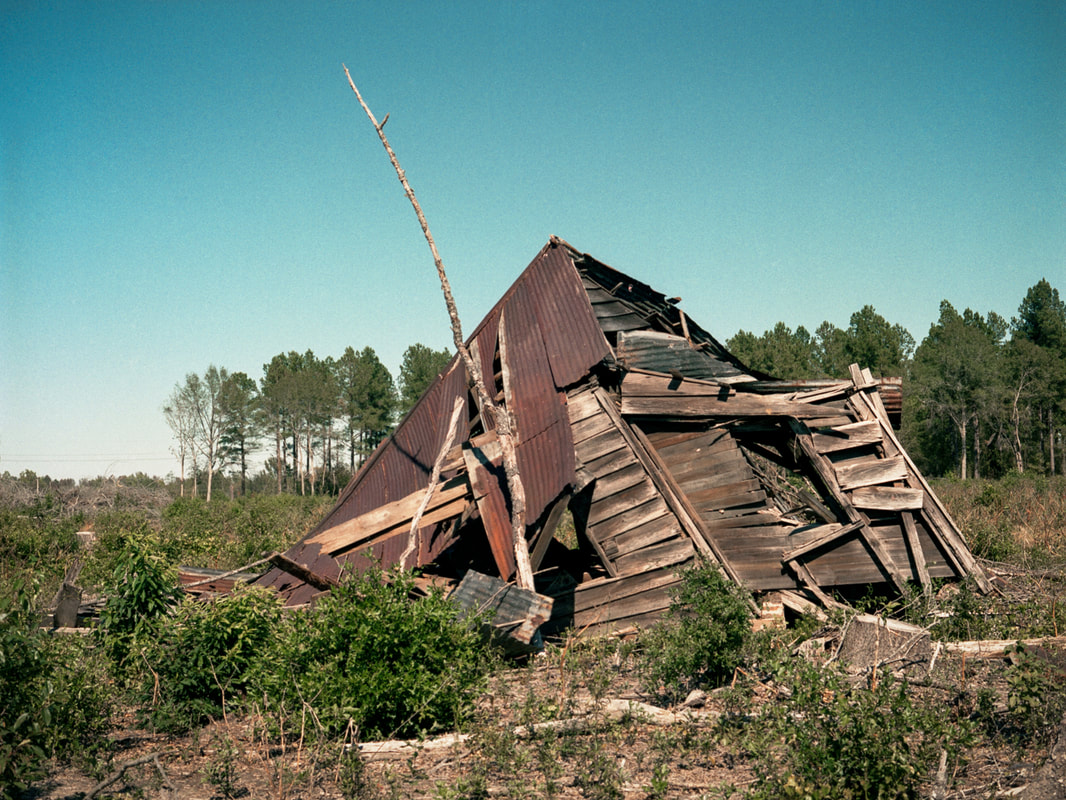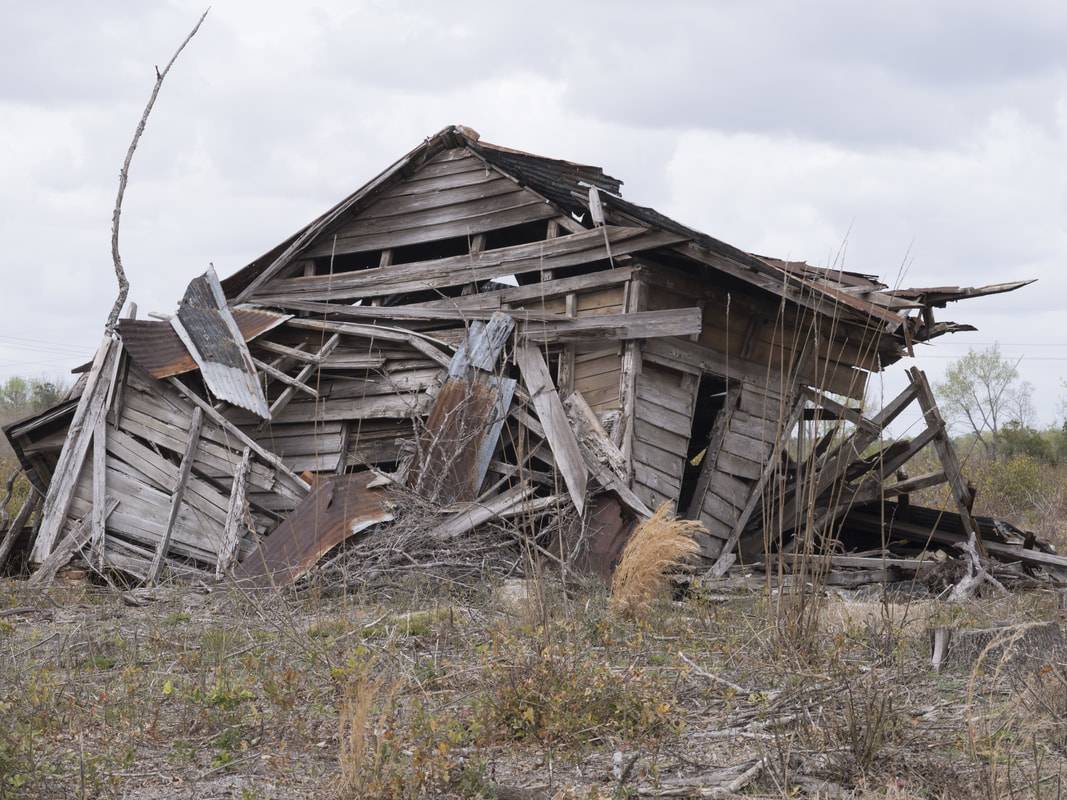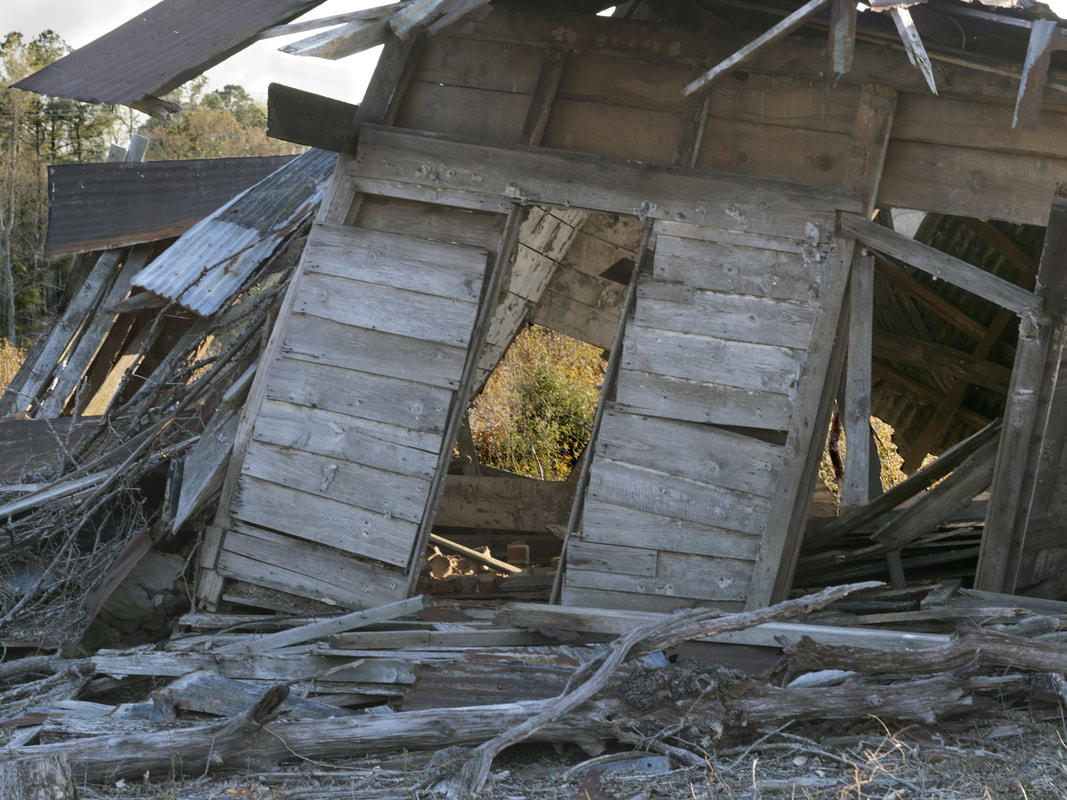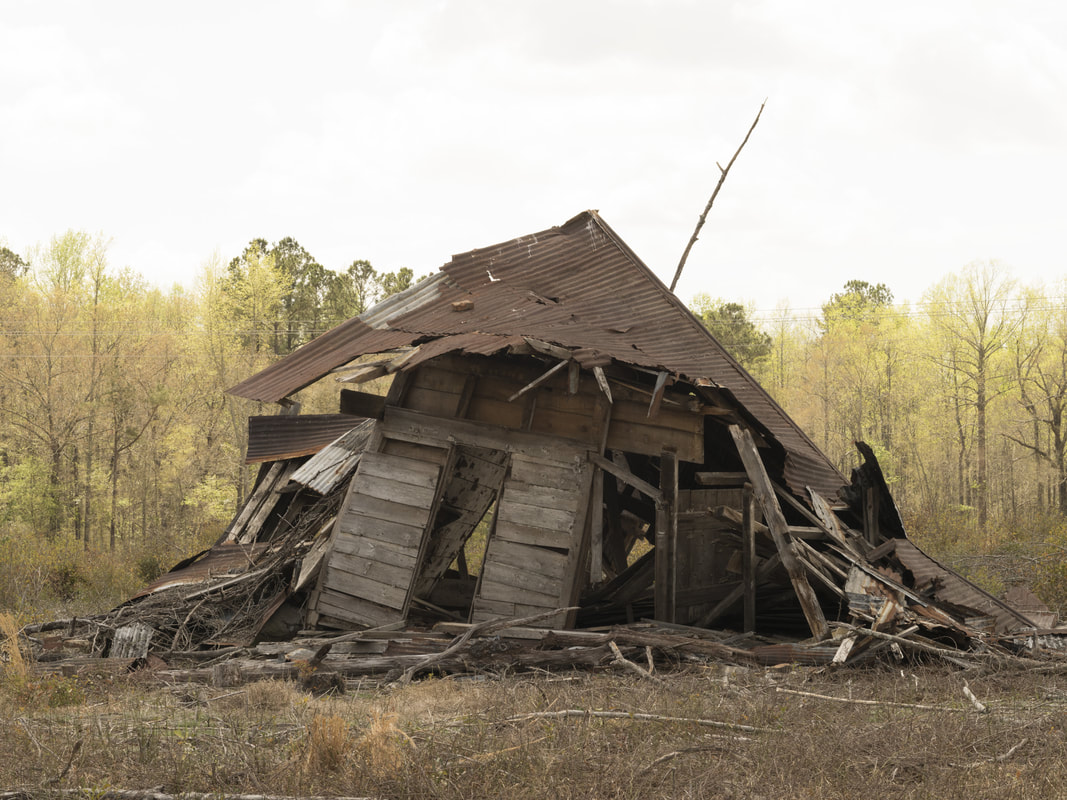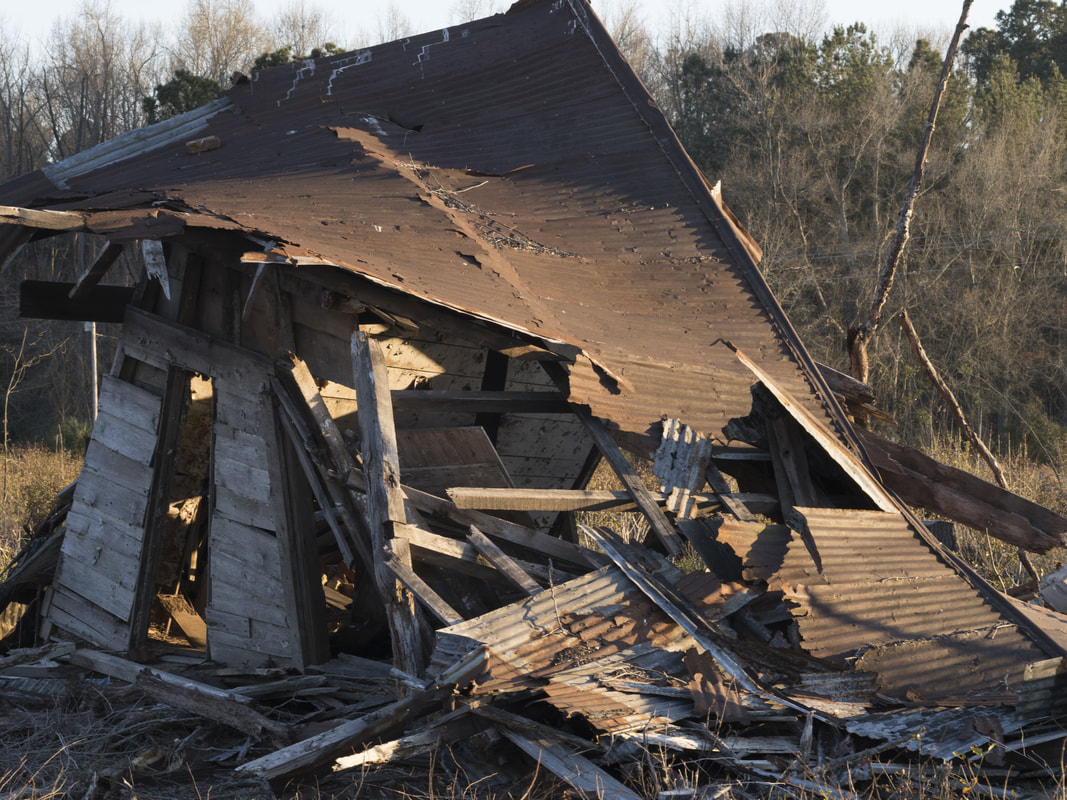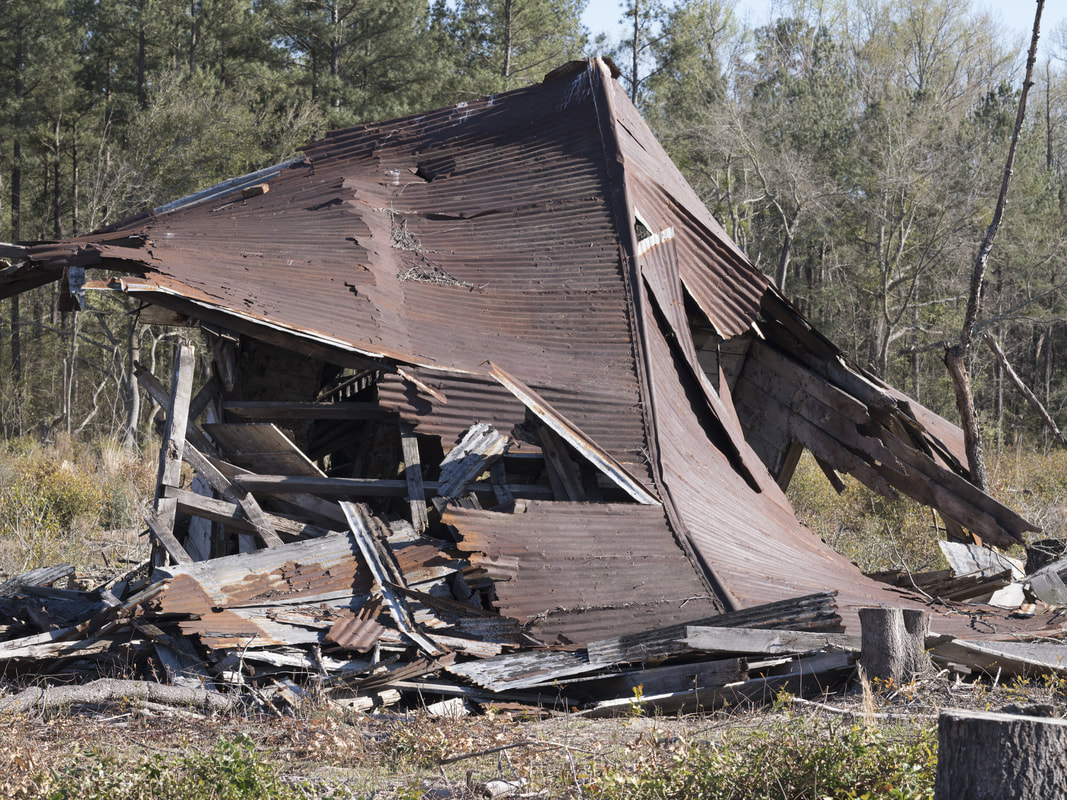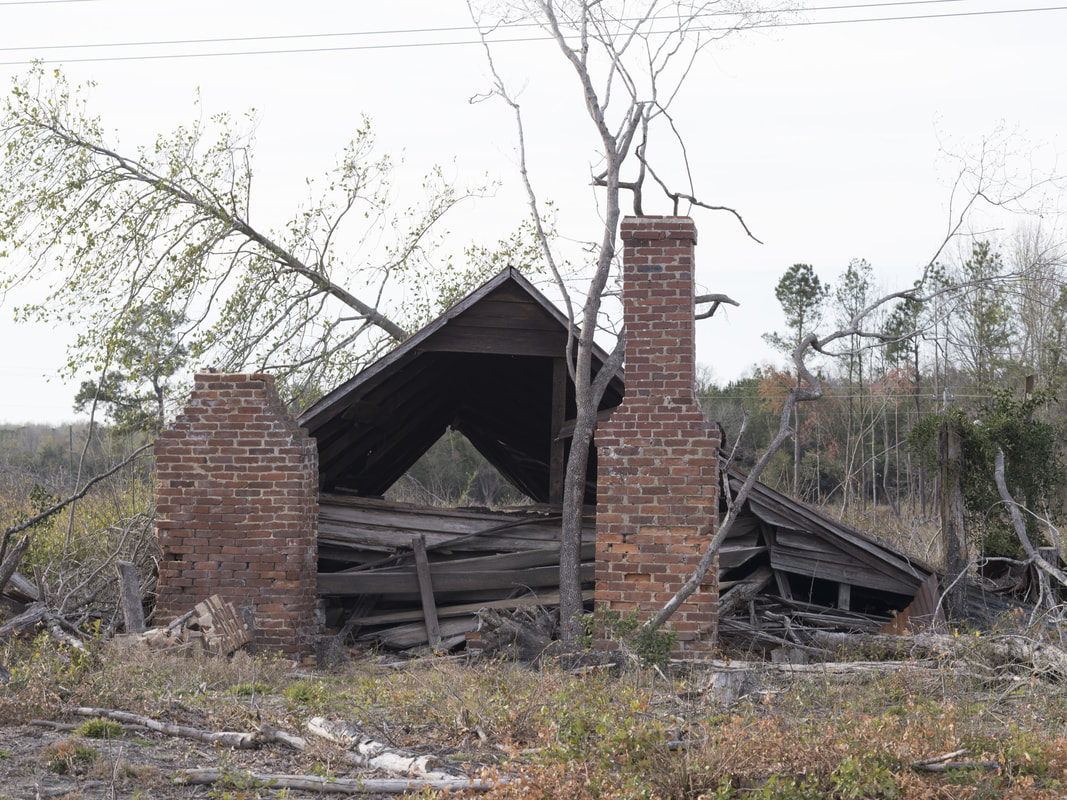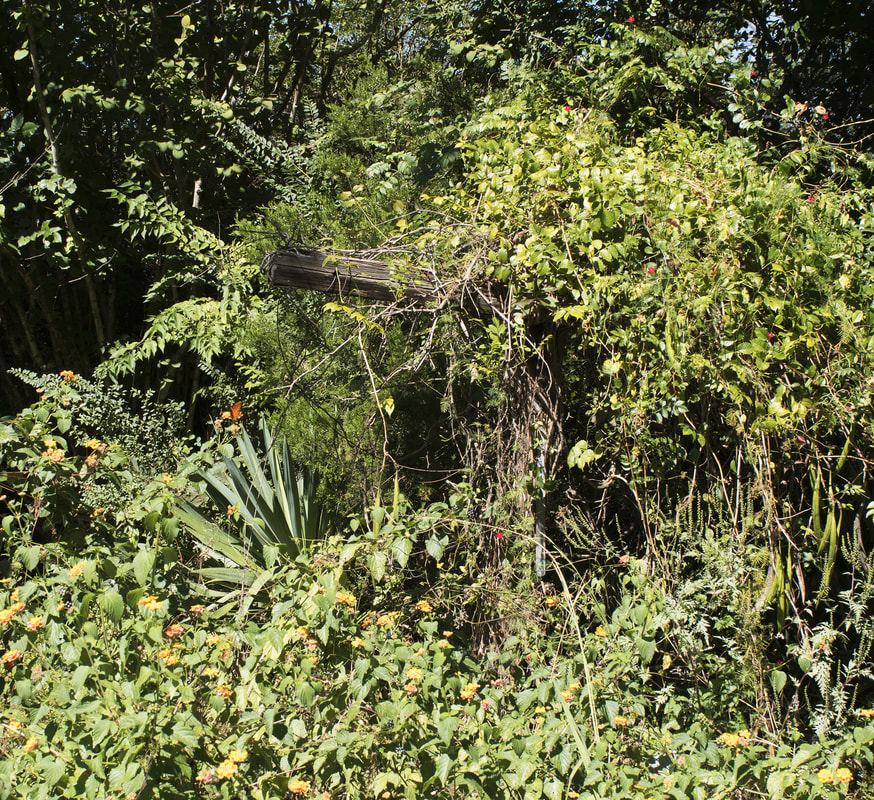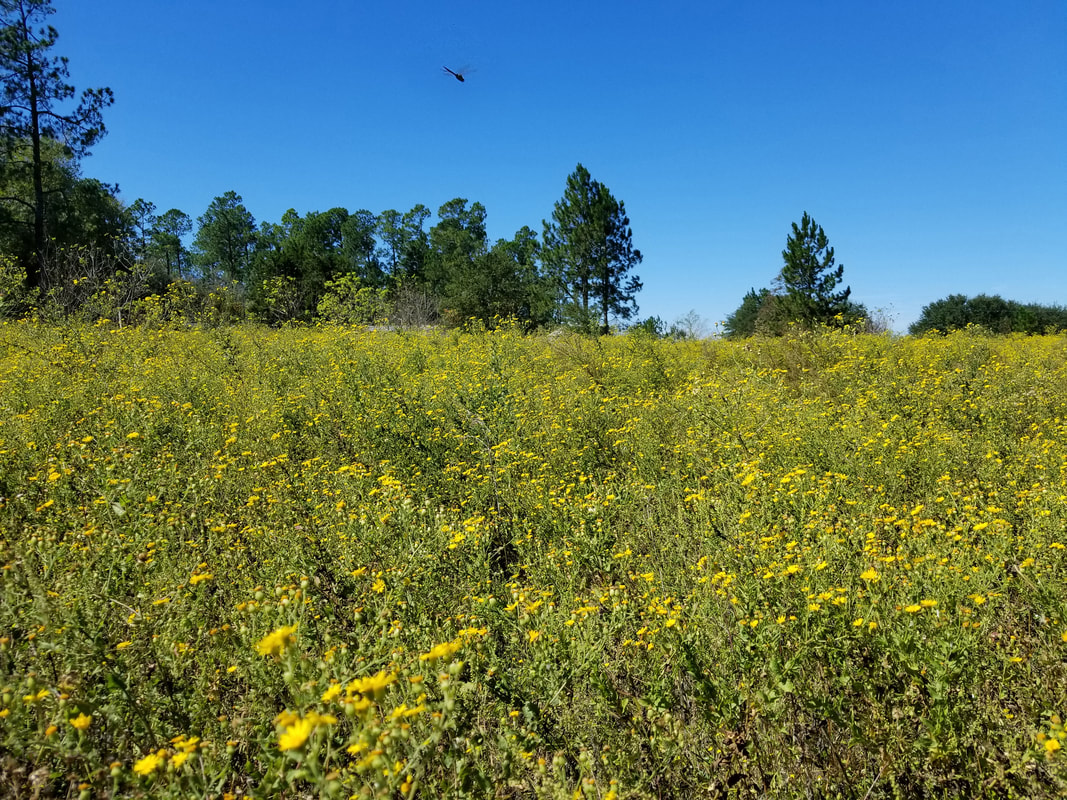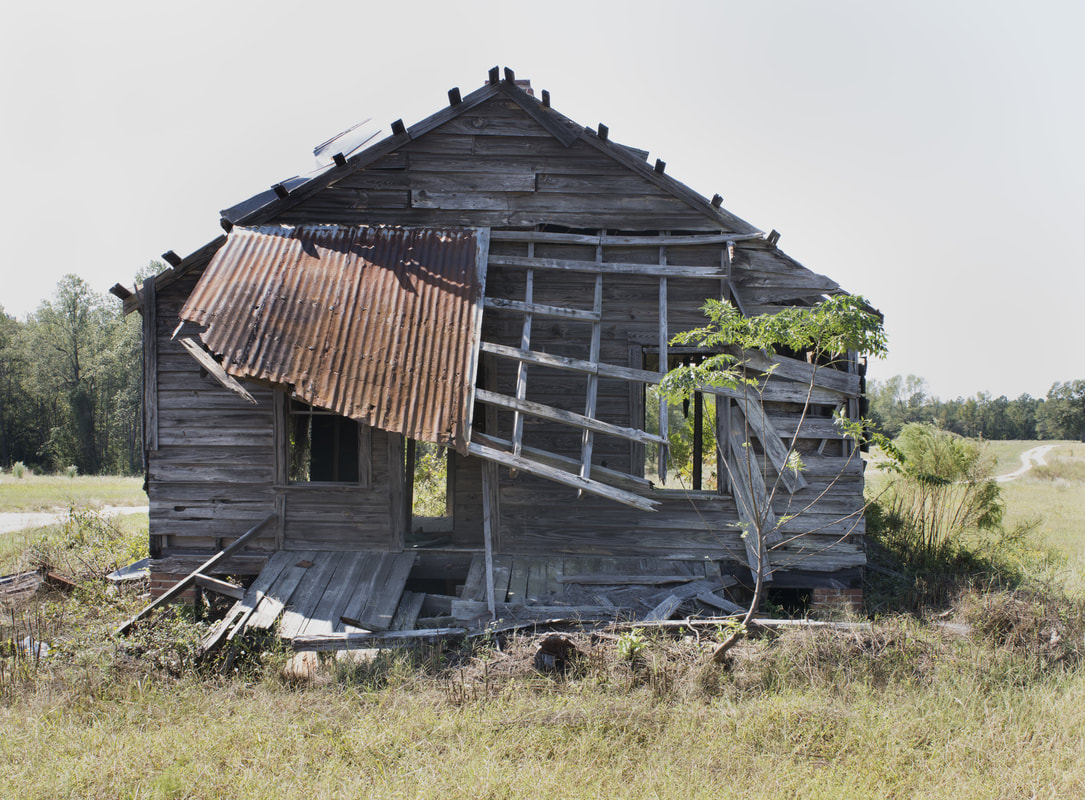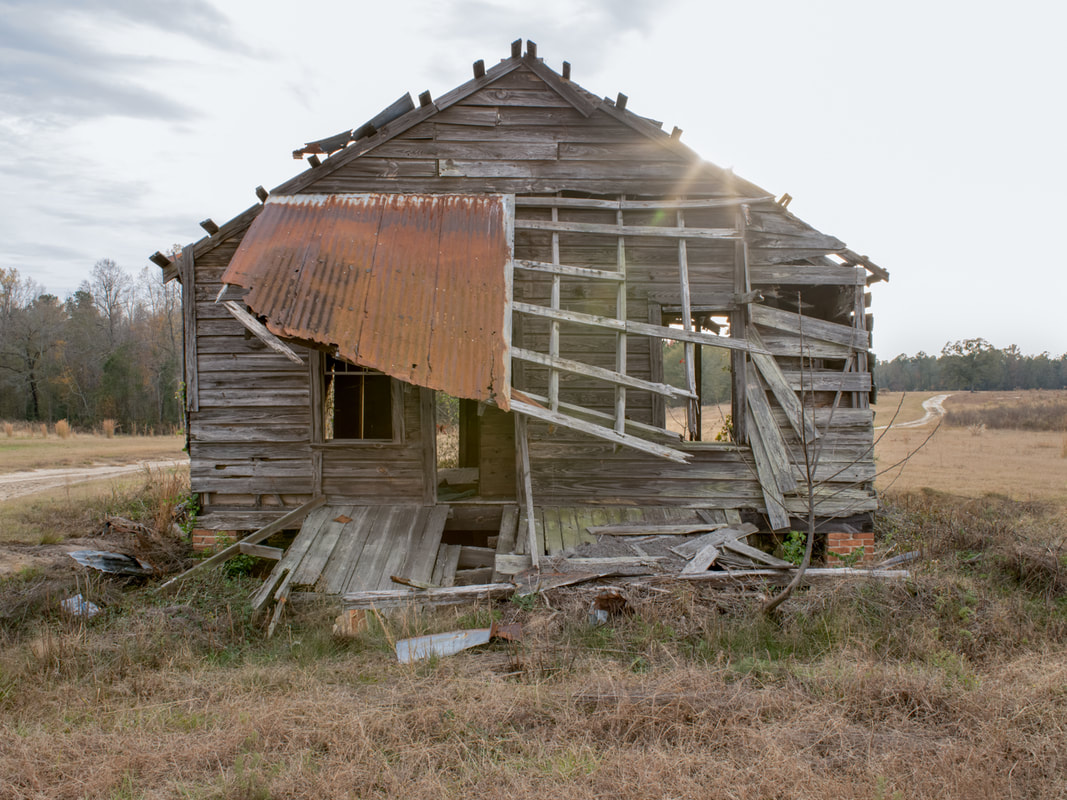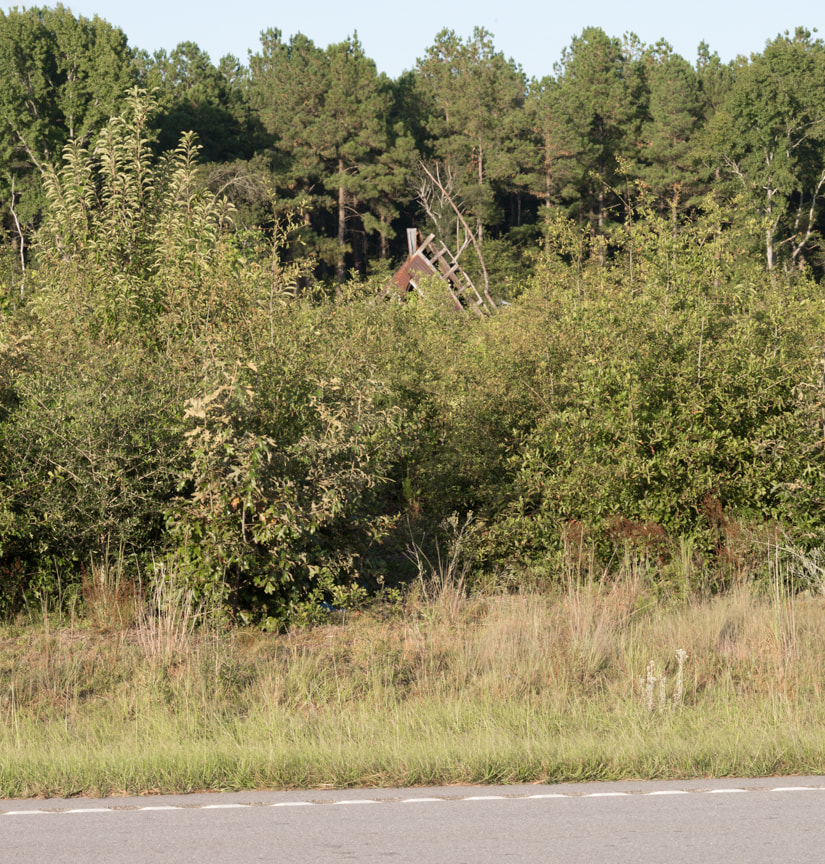The Toppled Shack
Post-bellum and pre-Computer Age, the scenes posted here center on a tenant farmer's cabin, a structure that became concealed amid pines and other trees as fields were abandoned. The widespread removal of timber that is currently scarring the landscape across South Carolina revealed the toppled shack and a companion structure of which only chimneys and a roof remained. The former of the two long-abandoned residences was especially intriguing as a focus of photographic study. Differing appearances were displayed, depending on the time of day, the season, and where I stood as I circumambulated and took portraits of the toppled shack. Across the highway, a less damaged structure--also deeply weathered--beckoned.
When you have some time, please take a look at my other websites:
www.barnsofsouthcarolina.net and www.bergensouthandnorth.com
